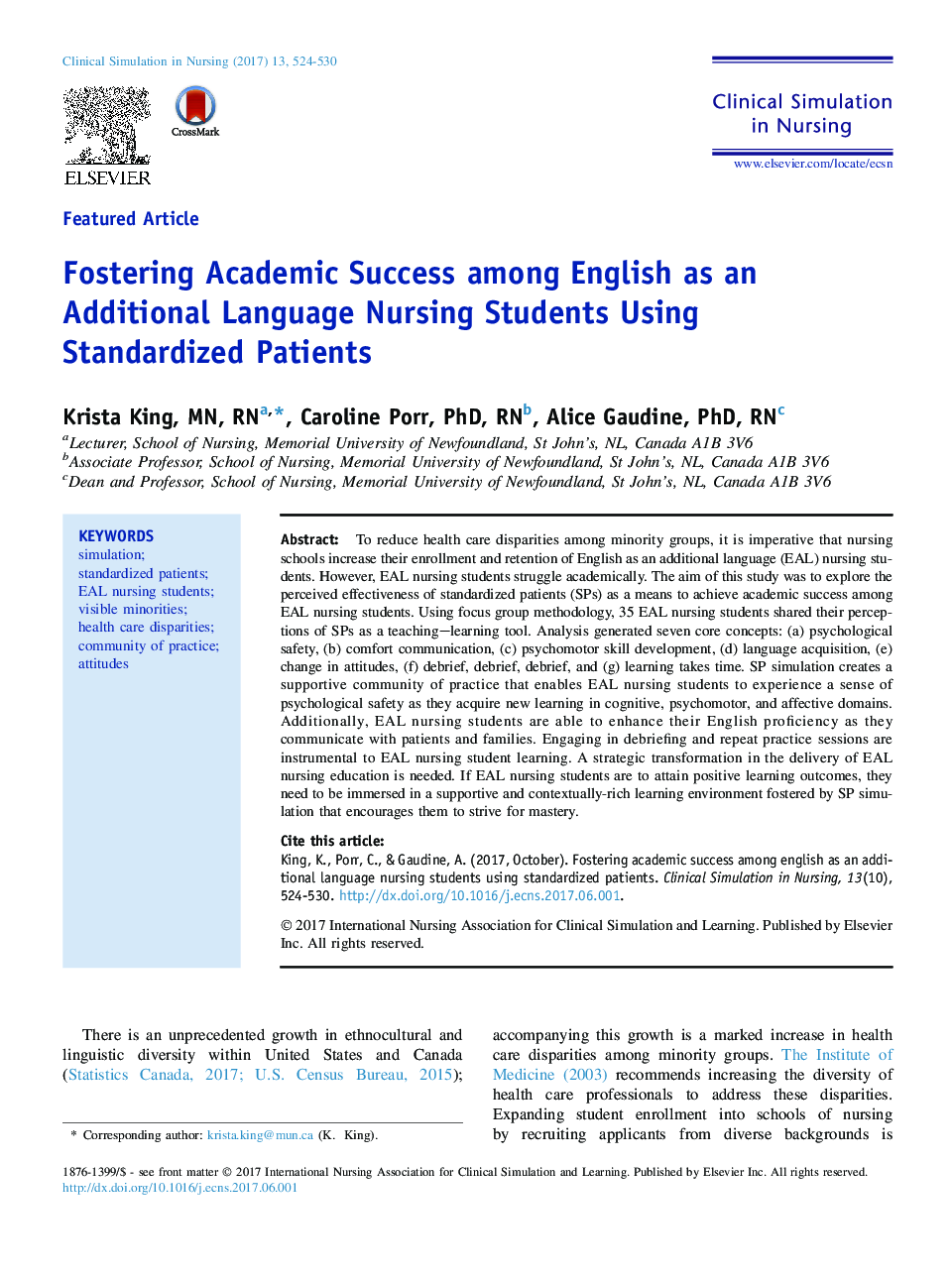| Article ID | Journal | Published Year | Pages | File Type |
|---|---|---|---|---|
| 5567549 | Clinical Simulation in Nursing | 2017 | 7 Pages |
â¢This study explored EAL nursing students' perceptions of SPs as a means to achieve academic success.â¢SP simulation promotes substantial learning in cognitive, psychomotor and affective domains.â¢Students experience psychological safety, a key facilitator of learning during SP simulation.â¢Provision of debriefing sessions and extended simulation time will enhance student learning.
To reduce health care disparities among minority groups, it is imperative that nursing schools increase their enrollment and retention of English as an additional language (EAL) nursing students. However, EAL nursing students struggle academically. The aim of this study was to explore the perceived effectiveness of standardized patients (SPs) as a means to achieve academic success among EAL nursing students. Using focus group methodology, 35 EAL nursing students shared their perceptions of SPs as a teaching-learning tool. Analysis generated seven core concepts: (a) psychological safety, (b) comfort communication, (c) psychomotor skill development, (d) language acquisition, (e) change in attitudes, (f) debrief, debrief, debrief, and (g) learning takes time. SP simulation creates a supportive community of practice that enables EAL nursing students to experience a sense of psychological safety as they acquire new learning in cognitive, psychomotor, and affective domains. Additionally, EAL nursing students are able to enhance their English proficiency as they communicate with patients and families. Engaging in debriefing and repeat practice sessions are instrumental to EAL nursing student learning. A strategic transformation in the delivery of EAL nursing education is needed. If EAL nursing students are to attain positive learning outcomes, they need to be immersed in a supportive and contextually-rich learning environment fostered by SP simulation that encourages them to strive for mastery.
